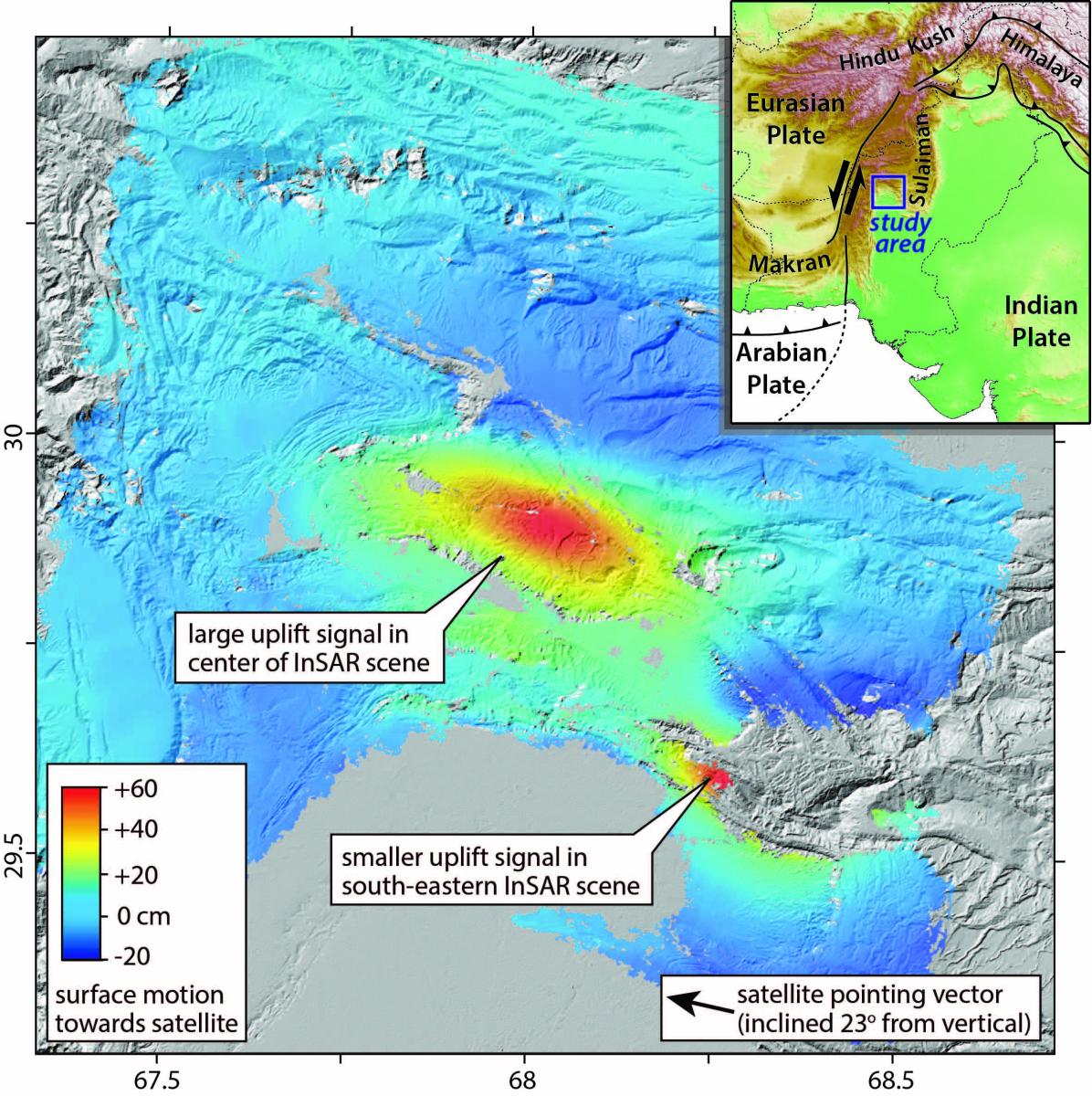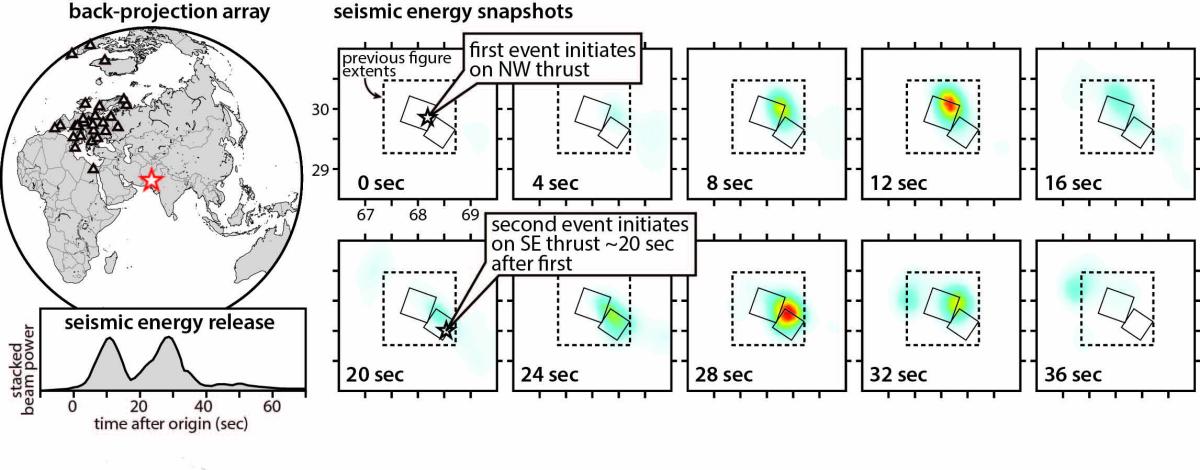 |
 |
GOLDEN, Colo., Feb. 8, 2016 – A paper co-authored by Mines Assistant Professor Edwin Nissen, “Limitations of rupture forecasting exposed by instantaneously triggered earthquake doublet,” has been published by Nature Geoscience.
“Remote sensing and seismological observations of a recent earthquake in Pakistan highlighted an unexpected incidence of an earthquake rupture ‘jumping’ across a large gap between between two faults – this has important implications on how we anticipate the size of future earthquakes, a significant question for the half of the U.S. population (and for several hundred million people worldwide) who are at risk from damaging seismic shaking,” Nissen said.
The earthquake was listed in published seismic catalogs as a single event, but surface deformation mapped using “before” and “after” satellite radar images revealed not one but two large zones of uplift, generated by slip on two distinct faults. Meanwhile, seismograms show two large pulses of seismic energy, spaced just twenty seconds apart, in the same location as the radar uplift zones.
“The size of an earthquake depends on the length of the faulting involved and modern earthquake hazard assessments are based on the premise that ruptures are restricted to closely-spaced segments and cannot jump between widely-spaced ones. Our observations indicate that earthquakes can do just this. In this example, the earthquake doublet greatly increased the duration and area of maximum shaking and probably contributed to the relative large death toll in the earthquake,” he said.
Contact:
Karen Gilbert, Director of Public Relations, Colorado School of Mines | 303-273-3541 | kgilbert@mines.edu
Kathleen Morton, Digital Media and Communications Manager, Colorado School of Mines | 303-273-3088 | kmorton@mines.edu
